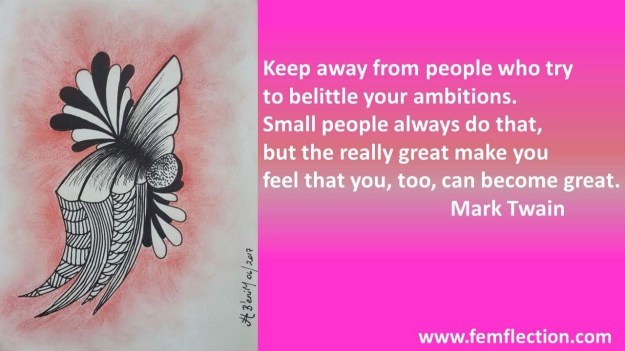
Monthly Archives: September 2019
Self-Esteem, Self-Image, and Projection

Photo by rawpixel.com on Pexels.com
By: Angie Falls
On my path of self-discovery I did some research on the topic Self. To better understand this I would like to share the below methodology.
The Johari window is a technique that helps people better understand their relationship with themselves and others. It was created by psychologists Joseph Luft (1916–2014) and Harrington Ingham (1916–1995) in 1955.
To further analyze it is necessary to properly define Self-Esteem, Self-Image, and Projection.
What Is Self-Esteem, Self-Image, and Projection?
Self-esteemis the opinion you have of yourself and your perception on your value as a person. Low (negative) self-esteem can cause people to be negative, lack motivation, and be moody. Those with higher (positive) self-esteem like themselves, so they expect others to like them, too. They don’t harshly judge themselves and are comfortable with who they are. Continue reading

Lindsay’s In Business: PART 78. The field of Organizational Alignment

Photo by Pixabay on Pexels.com
What happens when you realise your path is entrepreneurship rather than employment? Lindsay takes up the challenge and shares an account of her journey as it unfolds…
I’m on a hard detox diet. It felt as if I was fasting for the first few days, and with that came an amazing kind of kick start to my brain. I could think faster and more creatively. I could speak more articulately and more eloquently.
During those days I reflected on how Mirror Mirror fits within the field of organizational alignment – as I believe it indeed has become a field in its own right – and how that field has evolved.
Lindsay’s In Business: PART 77 It’s basically about TRUST
 What happens when you realise your path is entrepreneurship rather than employment? Lindsay takes up the challenge and shares an account of her journey as it unfolds…
What happens when you realise your path is entrepreneurship rather than employment? Lindsay takes up the challenge and shares an account of her journey as it unfolds…
Business has stalled for a month. It’s mid-summer and there’s no activity. My pipeline , everything is frozen in time while outside it’s a heatwave.
We went on a European road trip for 3 weeks covering 10 countries – it was amazing, hectic and hard work. Sounds like business!
While I was away, I read Stephen MR Covey’s book, The Speed of Trust. It inspired me to share. A summary of what he says is this…
There are 4 core aspects of trust that build credibility: Integrity and Intent (character), Capability and Results (competence). All of these are needed to establish trust. For example, you can trust your friend but wouldn’t to go to them to get your teeth fixed unless they were a qualified dentist.
Building trust starts with inspiring trust in self through behaviours, such as: talk straight, demonstrate respect, clarify expectations, show loyalty, and confront reality. Through reciprocation of these behaviours, trust can be created between people.
Organizations need another dimension to build trust, which centres around the ‘principle of alignment’ at the design level: “Just as the tax created by low trust is real, measurable, and extremely high, so the dividends of high trust are also real, quantifiable, and incredibly high.”
The stories that Covey tells about how these behaviours work in practice orientate around congruent communications and systems that lead to rich, expedient, productive actions.
These tables say it all…
What does it look like in an organization when there is no trust?
| Organization level | Interpersonal level |
| Micromanagement | Hostile behaviours and confrontations |
| Sabotage, grievances, lawsuits | Labelling of others as enemies or allies |
| Punishing systems and hierarchy | Communications coloured by fear, uncertainty, doubt and worry |
| Unhappy employees and stakeholders | Real issues not surfaced or dealt with effectively |
| Time wasted defending positions and decisions | Energy draining, joyless interactions |
| Bureaucracy, redundancy and misalignment in systems and structures | Evidence-gathering of other party’s weaknesses and mistakes |
| Hidden agendas | Guarded / grudging dispensing of information |
| Slow approvals / lack of overall agility | Regular misunderstandings |
What does it look like in an organization when there is trust?
| Organization level | Interpersonal level |
| Aligned systems and structures | Positive energy |
| Good communication | Inspiring work characterised by purpose, creativity and excitement |
| A focus on work and results | Open, transparent relationships |
| Positive partnership relationships | Cooperative, close, vibrant relationships |
| Helpful systems and structures | Cordial, healthy communications |
| Strong creativity and innovation | Focus on smooth and efficient collaboration |
| Engagement, confidence, loyalty | Mutual tolerance and acceptance |
| Healthy workplace | Mistakes seen as learning opportunities |
Mirror Mirror– We identify and close alignment gaps between people in organizations to improve engagement and performance.
Your story, our platform: If you’ve got a story and would like to share it with other Femflectors, please let us know. Femflection is all about transferring learnings to help others, be they big or subtle. We want to connect with your feelings, your learnings, your reflections or your hopes for the future – in blog or interview format. Express yourself here. Get in touch with us via anja.uitdehaag@femflection.com
For more content visit our website http://www.femflection.com

